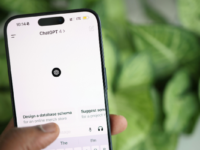Did you know that there’s a way to influence more than two-thirds of potential customers in your first contact with them? That there’s a simple way to create a connection that might lead to a lasting business relationship? Well, there is.
According to Adobe’s 2019 report, Diversity In Advertising, over 60 per cent of customers said they wanted to see inclusivity in content and marketing.
That is, they wanted to see acceptance and respect for human diversity including people with disabilities, and people of different genders, sexualities, religions, ethnicities, languages, and cultures.
What’s wrong with content now?
According to research by the polling firm IPSOS, more than 60 per cent of people say they do not feel represented in the content created by companies, right now. Incredibly, more than 70 per cent said that they simply couldn’t recognize the world in most advertising and content!
By creating content that is inclusive, you can help to build trust with your customers and potential customers. Over time, this can lead to brand loyalty and long-term relationships with people. It’s also a powerful driver for positive social changes.
Did you know, for example, that people with disabilities are particularly under-targeted in advertising but that audience has $2 trillion to spend each year, globally? That’s a lot of money to leave on the table for failing to include just that group.
Making your content inclusive
It’s easy to tell you the cost of failing to be inclusive, but how do we change that approach? Well, there are some simple steps you can take:
- Look at your current content. Who is it targeting? And who is it excluding? Narrowly-focused campaigns can seem like a “quick win” but over time, they alienate many potential buyers. By including people rather than excluding them and mastering the language and imagery of inclusivity, your content will go further and reach deeper than your competitor’s content.
- How do you present your content? Your web content, for example, ought to work with text-to-speech readers. It ought to be designed to be easily read and interactive elements should be easy to access even for those using non-traditional control systems. Making content inclusive means thinking about how people access that content.
- Words can be powerful. Most of us know now not to use words like “salesman” and use “salesperson” instead. But inclusive language means thinking carefully about the potential impact on the audience. Saying “crazy” in a negative sense might alienate someone who has a mental illness, for example. You might also want to think about the levels of localized idiom in your content too. Phrases like “wake up and smell the roses” might make sense in your neighbourhood but are they truly universal?
- Talk to your new audience and get feedback. The fastest way to learn to communicate with any group of people is to ask them what they like, what they don’t, and find out how to improve your own efforts. It requires patience and listening to get this right, however, don’t be defensive – seek to understand. They can also help you with things like visual imagery which should be inclusive but all too often isn’t.
- Keep it simple. This is not because you assume your audience lack intelligence but if, at any time international scholars to school children may be reading your content, keep the sentences short and avoid jargon. The clearer your content’s message the easier it is for everyone to relate to it.
Final thoughts
The case for creating inclusive content is abundantly clear. It’s profitable. It creates brand loyalty. It’s the right thing to do.
It’s also surprisingly easy to do if you follow the steps outlined above. So, why not make a start on creating more inclusive content, today?















